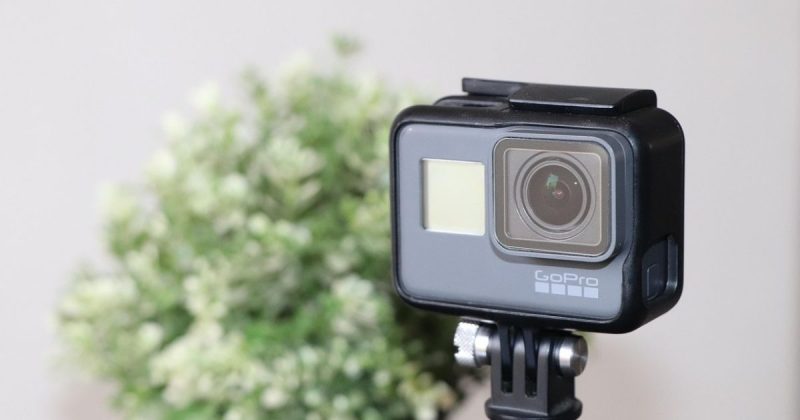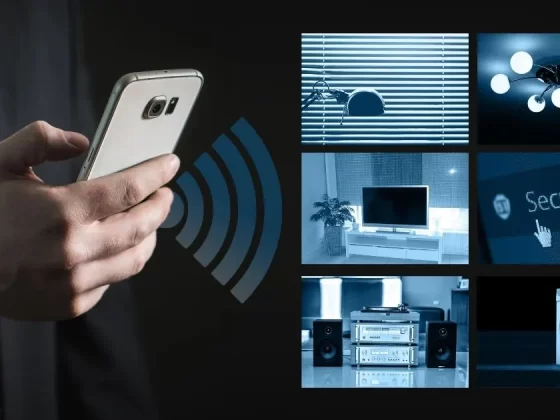As climate unpredictability becomes increasingly common, personal weather shield gadgets are emerging as innovative tools to help individuals control and adapt to their immediate environment. These compact, portable devices create a localized microclimate, offering protection from rain, wind, heat, or cold, and enabling users to stay comfortable no matter where they are. From urban commuters to outdoor enthusiasts, the personal weather shield is poised to redefine how people interact with their surroundings.
How Personal Weather Shields Work
Personal weather shields rely on a combination of advanced sensors, heating and cooling mechanisms, and airflow management to create a personalized climate bubble. Embedded sensors constantly monitor environmental conditions such as temperature, humidity, wind speed, and precipitation. Based on this data, the device dynamically adjusts its output to maintain comfort around the user. Some models feature miniaturized fans or thermoelectric plates that generate warmth or cooling, while others include water-repellent or wind-resistant shields to block rain and gusts.
More sophisticated versions integrate smartphone connectivity or AI-driven algorithms, allowing the gadget to learn user preferences, recognize habitual routines, and even anticipate changes in the surrounding environment. For example, suppose a rainstorm is detected ahead or body temperature drops due to exertion. In that case, the shield can proactively adjust its settings to provide warmth, cooling, or shelter, creating a microclimate that responds in real time. This combination of predictive intelligence and responsive hardware transforms the user’s immediate environment into a controlled, comfortable space, regardless of external weather conditions.
Applications in Daily Life
The versatility of personal weather shields makes them suitable for a wide range of everyday scenarios. Commuters can navigate unpredictable rain showers or icy winds without bulky jackets or umbrellas, staying comfortable and dry on their way to work or school. Outdoor workers and athletes benefit from optimal thermal regulation, which reduces fatigue, maintains focus, and supports performance during long hours outdoors. For hikers, campers, or festival-goers, sudden weather shifts are less disruptive, allowing activities to continue uninterrupted, whether it’s a surprise downpour, strong winds, or a hot sun.
In urban environments, personal weather shields offer additional advantages. They can mitigate the discomfort caused by wind tunnels between buildings, sun-exposed streets, or summer heat islands, creating a calm, controlled personal zone in otherwise unpredictable conditions. This highly personalized approach to comfort transforms how people experience their surroundings, allowing freedom of movement and focus without constantly adjusting clothing or seeking shelter. By combining portability, automation, and adaptive technology, these devices are redefining convenience and comfort in everyday life.
Health and Wellness Benefits
Personal weather shields offer more than just comfort—they provide meaningful health and wellness advantages. By creating a stable, controlled microclimate around the body, these devices can help prevent hypothermia, heat exhaustion, or fatigue, especially during extreme weather conditions. This is particularly beneficial for vulnerable populations, such as children, the elderly, or individuals with cardiovascular or respiratory sensitivities, as maintaining a consistent body temperature reduces strain on the heart and other vital systems.
Some advanced models also incorporate air filtration and purification technologies, which can remove dust, pollen, urban pollutants, and other allergens from the immediate environment. This feature supports respiratory health, making personal weather shields valuable for city dwellers navigating polluted streets or outdoor enthusiasts in environments with high allergen levels. By combining climate regulation with air quality management, these devices provide a holistic wellness solution—protecting the body from temperature extremes while supporting long-term health and comfort in a wide variety of settings.
Challenges and Considerations
While personal weather shield gadgets hold immense promise, several hurdles must be overcome to make them practical for widespread use. Battery life and portability remain critical challenges, as generating heating, cooling, or airflow in a compact device demands energy-efficient designs without adding bulk. Users need devices that can operate reliably throughout the day without frequent recharging, which calls for advanced power management and lightweight energy storage solutions.
Cost is another significant factor. The combination of thermoelectric materials, smart sensors, AI integration, and nano-coatings drives up production expenses, making these gadgets less accessible for everyday consumers. In addition, durability and maintenance are key considerations—exposure to moisture, dust, or rough handling can impact performance, requiring materials and components that can withstand long-term use. Environmental impact also plays a role, as the production, energy consumption, and eventual disposal of electronics and specialized fabrics need careful management to ensure sustainability. Addressing these challenges is essential for personal weather shields to move from innovative prototypes to reliable, everyday solutions that balance performance, convenience, and ecological responsibility.
The Future of Personal Weather Shields
As technology advances, personal weather shields are expected to become smaller, lighter, and more intuitive. Integration with wearable tech and smart clothing could allow seamless interaction between garments and microclimate devices, creating fully adaptive personal environments. AI-driven prediction systems might anticipate weather changes before they occur, adjusting settings proactively to maximize comfort. Ultimately, these gadgets represent a glimpse into a future where individuals can carry a personal climate zone with them, turning unpredictable weather from an obstacle into a manageable, even enjoyable, part of daily life.
Personal Weather Shield Gadgets: Taking Control of the Elements
In today’s world of increasingly erratic weather patterns, personal weather shield gadgets are emerging as a revolutionary solution for those seeking comfort, convenience, and protection wherever they go. These compact, portable devices create a localized microclimate around the wearer, shielding them from rain, wind, extreme heat, or cold. Unlike conventional weather gear, which reacts to conditions, personal weather shields proactively adapt in real time, combining technology, sensors, and automation to provide a consistently comfortable experience. By bridging the gap between personal comfort and environmental unpredictability, these gadgets are redefining how people interact with the outdoors and urban environments.
How They Function
A sophisticated combination of environmental sensors, heating and cooling systems, and airflow management powers the operation of personal weather shields. Embedded sensors constantly measure ambient temperature, humidity, wind speed, and precipitation, feeding this data into the device’s control system. Based on these readings, miniature fans, thermoelectric plates, or water-repellent shields automatically adjust the wearer’s microclimate.
Some advanced models go even further, connecting with smartphone apps or AI-driven algorithms to learn personal preferences, recognize habitual routines, and anticipate changes in weather conditions. This allows the gadget to preemptively provide warmth, cooling, or shelter as needed, effectively creating a personalized comfort bubble that reacts to both the environment and the wearer’s behavior. The result is an intelligent, real-time solution that makes unpredictable weather far less disruptive to daily life, outdoor activities, or professional routines.
Everyday Uses
The adaptability of personal weather shields makes them ideal for a wide range of scenarios. Urban commuters can navigate rainy streets, icy sidewalks, or sweltering heat without bulky outerwear, staying comfortable during their daily routines. Cyclists, runners, and outdoor fitness enthusiasts benefit from temperature regulation that helps maintain optimal performance and reduces the risk of overheating or chilling during exercise.
Outdoor workers—from construction crews to delivery personnel—gain consistent protection from sudden weather changes, helping sustain focus, energy, and safety throughout long shifts. Even in dense urban environments, where microclimates such as wind tunnels between buildings or localized heat islands can create unpredictable conditions, personal weather shields provide a portable, reliable buffer, giving users control over their immediate surroundings wherever they go.
Health and Wellness Advantages
Beyond comfort and convenience, personal weather shields deliver tangible health benefits. By creating a stable microclimate, they reduce the risk of heat stress, hypothermia, and fatigue, allowing the body to maintain optimal function despite external extremes. For vulnerable populations—such as the elderly, children, or individuals with cardiovascular conditions—these devices act as a proactive safeguard against temperature-related health issues. Some advanced models also feature air purification systems, filtering out dust, allergens, and urban pollutants, which support respiratory health while moving through cities or outdoor environments. By combining climate control with protective air quality measures, personal weather shields offer a holistic approach to wellness, ensuring both comfort and safety in everyday life.
Innovations Driving the Technology
Recent advances have transformed personal weather shields into sophisticated climate-control devices far beyond traditional umbrellas, jackets, or portable fans. Thermoelectric materials enable precise heating and cooling, allowing the gadgets to respond almost instantly to changing temperatures. Meanwhile, nano-coatings and smart fabrics provide water resistance, wind protection, and airflow regulation, combining durability with comfort in compact, lightweight designs.
Integration with wearable technology and AI algorithms takes personalization to the next level. Sensors embedded in the devices can monitor body temperature, heart rate, activity levels, and even sweat output, feeding data into AI systems that learn user habits and environmental patterns. Future iterations are expected to predict climate adjustments proactively, calibrating warmth, cooling, or airflow based not only on external conditions but also on individual metabolic rates, activity intensity, and even emotional states. The result is a truly adaptive personal microclimate, creating a seamless, intuitive experience where the environment responds intelligently to both the wearer and the world around them.
Shaping a Smarter, Weather-Proof Tomorrow
Despite the promise, challenges remain. Battery life, portability, and cost are key considerations, as effective devices require energy-efficient yet powerful components. Durability, maintenance, and environmental impact of manufacturing and disposal are also important for sustainability. However, as materials science and AI continue to advance, personal weather shields are expected to become lighter, smarter, and more affordable. Future iterations may integrate seamlessly with smart clothing or other wearables, creating a fully adaptive system where the environment adjusts to the user rather than the other way around.
Ultimately, personal weather shield gadgets offer a glimpse into a future where weather is no longer a constraint. By creating a portable microclimate, they allow individuals to navigate the world comfortably, safely, and efficiently—transforming the unpredictable into a manageable, even enjoyable, part of daily life.: Basis for Strategic Educational Development








